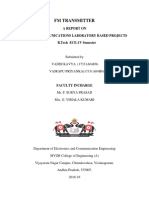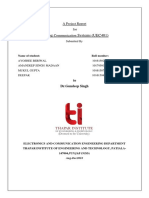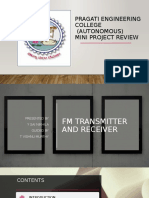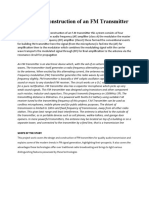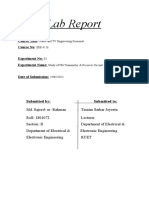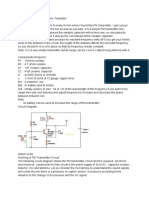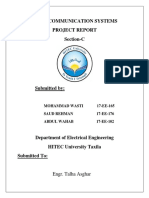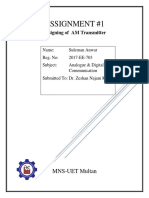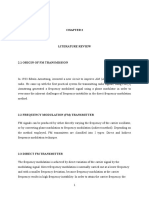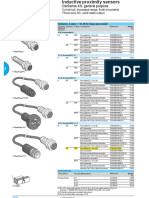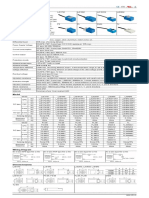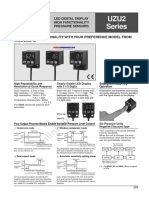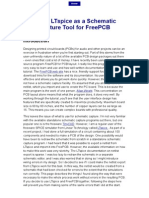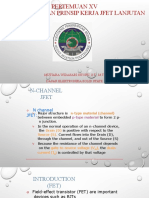0% found this document useful (0 votes)
60 views14 pagesFM Transmitter
The document outlines a project on building an FM transmitter by a group of electronics engineering students. It includes sections on the introduction, circuit diagram, components required, working principle, and conclusion, detailing the design and functionality of the transmitter. The project aims to provide practical experience in circuit design and implementation, confirming its success and relevance to their studies.
Uploaded by
Suvojit GhoshCopyright
© © All Rights Reserved
We take content rights seriously. If you suspect this is your content, claim it here.
Available Formats
Download as DOCX, PDF, TXT or read online on Scribd
0% found this document useful (0 votes)
60 views14 pagesFM Transmitter
The document outlines a project on building an FM transmitter by a group of electronics engineering students. It includes sections on the introduction, circuit diagram, components required, working principle, and conclusion, detailing the design and functionality of the transmitter. The project aims to provide practical experience in circuit design and implementation, confirming its success and relevance to their studies.
Uploaded by
Suvojit GhoshCopyright
© © All Rights Reserved
We take content rights seriously. If you suspect this is your content, claim it here.
Available Formats
Download as DOCX, PDF, TXT or read online on Scribd
/ 14














